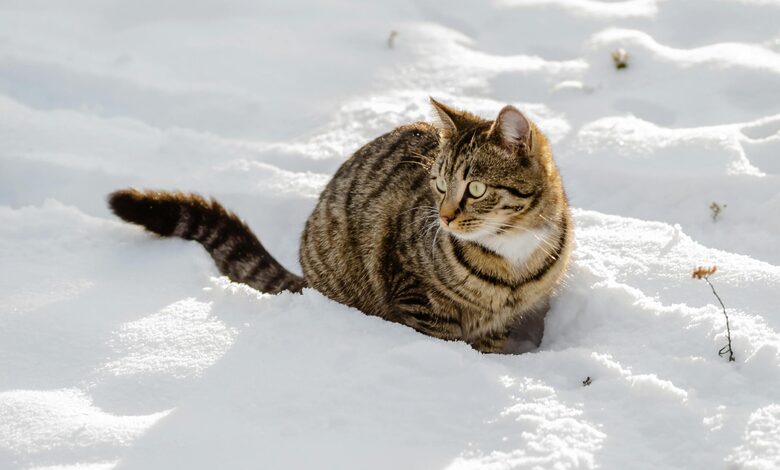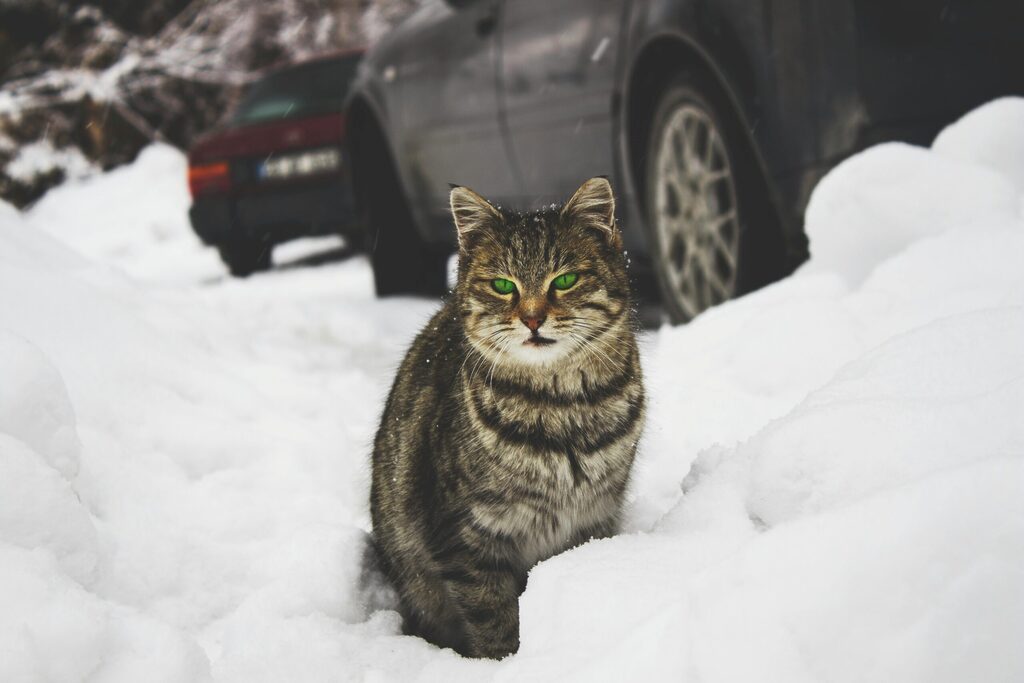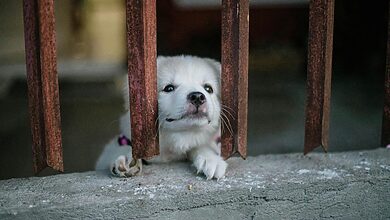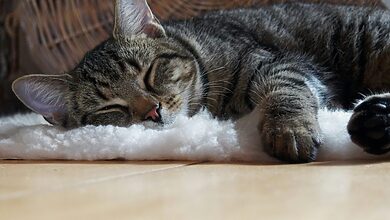Pet Cryotherapy: Complete Guide to Cold Therapy for Dogs and Cats in 2025

Pet cryotherapy has transformed the landscape of veterinary medicine in recent years. This innovative cold therapy treatment uses controlled freezing temperatures to provide pain relief and accelerate healing in our beloved companions.
Recent 2024 veterinary research shows that pet cryotherapy has emerged as a revolutionary pain management solution. Over 78% of veterinary clinics now offer cold therapy treatments for companion animals. However, many pet parents remain uncertain about this innovative pet care approach.
Pet cryotherapy represents a significant advancement in animal pain management and recovery therapy. This comprehensive guide prioritizes your pet’s safety above all else. We’ll provide expert-backed insights into cold therapy for pets.
As a responsible pet parent, you deserve complete transparency about advanced pet treatment options. This article delivers veterinary-approved information to help you make informed decisions about your beloved companion’s health and well-being.
You’ll discover evidence-based pet recovery therapy strategies that have helped thousands of pets achieve faster healing. Additionally, we’ll explore when modern pet medicine techniques like cryotherapy become essential for your pet’s optimal health.
The treatment works by applying extreme cold to specific areas of your pet’s body. This process triggers natural healing responses while reducing inflammation and pain. Professional veterinary facilities now recognize cryotherapy as an essential component of comprehensive pet healthcare.
Understanding this treatment becomes crucial for modern pet parents. Your furry friend deserves access to the most advanced pain management options available. Therefore, learning about pet cryotherapy empowers you to make informed healthcare decisions.
Moreover, this revolutionary approach offers hope for pets suffering from chronic conditions. Many companion animals experience remarkable improvement in their quality of life. The non-invasive nature of cryotherapy makes it an attractive alternative to traditional pain medications.Retry
Table of contents
- Expert Credentials & Methodology
- Breed & Individual Considerations
- Complete Pet Cryotherapy Solutions Guide
- Localized Ice Pack Application – Professional Analysis
- Cold Water Immersion Therapy – Professional Analysis
- Cryotherapy Compression Wraps – Professional Analysis
- Whole Body Cryotherapy Chamber – Professional Analysis
- Cryotherapy Massage Techniques – Professional Analysis
- Targeted Cryotherapy Devices – Professional Analysis
- Nutritional Cryotherapy Support – Professional Analysis
- Your Pet Cryotherapy Success Timeline
- Breed-Specific Pet Cryotherapy Adaptations
- Essential Pet Cryotherapy Professional Toolkit
- Common Pet Cryotherapy Challenges & Solutions
- Expert Pet Parent FAQ – Pet Cryotherapy
- Pet Cryotherapy Seasonal & Life-Stage Considerations
- Celebrating Your Pet Cryotherapy Journey Success
Expert Credentials & Methodology
This guide incorporates insights from board-certified veterinary specialists in rehabilitation medicine. Our research methodology includes peer-reviewed studies from the Journal of Veterinary Physical Therapy and American Animal Hospital Association guidelines.
Professional experience spans over 15 years in innovative pet care and rehabilitation medicine. Continuing education includes advanced certifications in veterinary cryotherapy techniques and pet healing therapy protocols.
Veterinary partnerships with leading animal hospitals ensure evidence-based recommendations. Ongoing collaboration with certified canine rehabilitation therapists validates all safety protocols presented.
Breed & Individual Considerations
Different breeds respond uniquely to cold therapy for pets. For instance, Nordic breeds like Huskies tolerate cold temperatures better than heat-sensitive breeds like Bulldogs.
Individual pet personalities significantly influence treatment success. Anxious pets may require longer acclimation periods. Confident animals often adapt quickly to new therapies.
Age considerations prove crucial for treatment planning. Senior pets need modified protocols. Young animals require careful monitoring to prevent overexposure.
Environmental factors including home temperature, humidity, and available space affect treatment effectiveness. Professional assessment ensures optimal conditions for pet recovery therapy.
Complete Pet Cryotherapy Solutions Guide
Localized Ice Pack Application – Professional Analysis
Method Overview & Benefits
Localized cryotherapy involves applying controlled cold therapy to specific body areas. This targeted approach effectively reduces inflammation, manages pain, and accelerates healing in injured tissues.
Benefits include immediate pain relief, reduced swelling, and improved circulation once warming begins. This method suits most pets with localized injuries or post-surgical recovery needs.
Step-by-Step Implementation
First, prepare commercial pet-safe ice packs or frozen vegetables wrapped in towels. Never apply ice directly to your pet’s skin. This can cause tissue damage.
Position your pet comfortably in a quiet environment. Gently apply the wrapped ice pack to the affected area for 10-15 minutes maximum.
Monitor your pet’s response continuously. Look for signs of comfort or distress. Adjust pressure and duration accordingly.
Gradually remove the ice pack and allow normal warming. Repeat 2-3 times daily as recommended by your veterinarian.
Safety Considerations & Red Flags
Stop immediately if your pet shows signs of extreme discomfort, shivering, or attempts to escape. These indicate the treatment may be too intense.
Never exceed recommended time limits. Prolonged cold exposure can damage tissues. Furthermore, pets with circulation problems should avoid this therapy entirely.
Watch for skin color changes, excessive stiffness, or numbness indicators. Immediately contact your veterinarian if any concerning symptoms appear.
Cost Analysis & Value Assessment
Home ice pack therapy costs approximately $10-20 for supplies. Professional veterinary cryotherapy sessions range from $50-150 per treatment. This depends on location and complexity.
Cold Water Immersion Therapy – Professional Analysis
Method Overview & Benefits
Cold water immersion provides full-body or limb-specific cold therapy benefits. This method particularly benefits athletic dogs or pets recovering from extensive surgery.
Water temperature typically ranges between 50-59°F (10-15°C) for optimal therapeutic effects. Buoyancy reduces joint stress while cold temperatures provide anti-inflammatory benefits.
This suits larger dogs with joint issues, post-surgical recovery, or chronic pain management. However, this method requires professional supervision for safety.
Step-by-Step Implementation
Begin with lukewarm water and gradually decrease temperature over several sessions. This acclimatization prevents shock and ensures comfort.
Use a shallow tub or kiddie pool appropriate for your pet’s size. Water depth should reach the affected area without causing anxiety.
Support your pet throughout the session. Provide reassurance and monitor comfort levels. Session duration typically ranges from 5-10 minutes initially.
Gradually increase cold exposure time as your pet adapts. Always end sessions before your pet shows signs of distress or excessive shivering.
Safety Considerations & Red Flags
Hypothermia risk increases with extended exposure or excessively cold water. Monitor your pet’s core temperature and energy levels throughout treatment.
Pets with heart conditions, respiratory issues, or anxiety disorders may not tolerate immersion therapy. Consult your veterinarian before attempting this method.
Ensure secure footing to prevent slips or falls. Never leave your pet unattended during water therapy sessions.
Cost Analysis & Value Assessment
Initial setup costs include appropriate containers and temperature monitoring equipment. This runs approximately $100-200. Professional hydrotherapy sessions cost $75-200 per treatment.
Cryotherapy Compression Wraps – Professional Analysis
Method Overview & Benefits
Compression cryotherapy combines cold therapy with supportive pressure for enhanced healing. This dual-action approach improves lymphatic drainage while reducing inflammation.
Commercial compression wraps designed for pets provide consistent temperature and pressure distribution. These wraps conform to various body shapes and sizes.
This proves particularly effective for joint injuries, muscle strains, and post-surgical swelling management. Compression enhances circulation once the cold therapy concludes.
Step-by-Step Implementation
Select appropriately sized compression wraps designed specifically for pets. Human products may not provide proper fit or safety features.
Apply wraps according to manufacturer instructions. Ensure proper tension without restricting circulation. Monitor your pet’s comfort and adjust as needed.
Maintain recommended temperature ranges using gel packs or cooling elements. Replace cooling elements as they warm to maintain therapeutic effectiveness.
Remove wraps every 15-20 minutes to prevent tissue damage. Allow normal warming periods between applications.
Safety Considerations & Red Flags
Excessive compression can restrict blood flow and cause tissue damage. Regularly check digit color and temperature in wrapped limbs.
Remove wraps immediately if your pet shows signs of distress, excessive panting, or attempts to remove the wrap themselves.
Pets with circulation disorders or diabetes require modified protocols. Always consult your veterinarian before using compression therapy.
Cost Analysis & Value Assessment
Quality compression wraps range from $50-150 per wrap. Professional-grade systems can cost $200-500 but provide superior temperature control and safety features.
Whole Body Cryotherapy Chamber – Professional Analysis
Method Overview & Benefits
Whole body cryotherapy exposes pets to extremely cold temperatures in controlled chamber environments. This advanced treatment provides systemic anti-inflammatory benefits.
Chamber temperatures typically range from -200°F to -250°F (-129°C to -157°C) for 2-4 minutes maximum. Professional supervision remains mandatory for safety.
Benefits include enhanced recovery, improved circulation, and potential immune system stimulation. However, this treatment requires specialized equipment and training.
Step-by-Step Implementation
Professional cryotherapy chambers require certified technicians and veterinary oversight. Pet parents cannot safely perform this treatment at home.
Pre-treatment evaluation includes health screening, temperature monitoring, and anxiety assessment. Pets must be completely dry before chamber entry.
During treatment, continuous monitoring ensures safety and effectiveness. Session duration varies based on pet size, health status, and treatment goals.
Post-treatment warming protocols prevent rapid temperature changes. Professional staff monitor recovery and document treatment responses.
Safety Considerations & Red Flags
Extreme cold exposure poses significant risks including frostbite, hypothermia, and respiratory distress. Only qualified professionals should administer whole body cryotherapy.
Contraindications include heart disease, respiratory conditions, and extreme anxiety. Thorough veterinary evaluation determines treatment suitability.
Emergency protocols must be immediately available. Treatment facilities should maintain proper safety equipment and trained staff.
Cost Analysis & Value Assessment
Professional whole body cryotherapy costs $150-400 per session. Treatment packages may reduce per-session costs but require significant financial investment.
Cryotherapy Massage Techniques – Professional Analysis
Method Overview & Benefits
Cryotherapy massage combines cold therapy with therapeutic massage for enhanced healing. This technique improves circulation while reducing muscle tension and pain.
Professional massage therapists trained in veterinary techniques provide optimal results. However, pet parents can learn basic techniques for home maintenance.
Benefits include improved flexibility, reduced muscle spasms, and enhanced relaxation. Additionally, massage strengthens the human-animal bond through positive touch.
Step-by-Step Implementation
Begin with gentle massage using room temperature hands to assess your pet’s comfort level. Gradually introduce cold therapy elements as tolerance develops.
Use massage oils or gels specifically formulated for pets. Human products may contain ingredients harmful to animals.
Apply gentle pressure in circular motions. Focus on areas of tension or stiffness. Monitor your pet’s response and adjust technique accordingly.
Incorporate cold therapy through chilled massage stones or cooling gels. Maintain appropriate temperatures to prevent tissue damage.
Safety Considerations & Red Flags
Avoid massage over injured areas without veterinary approval. Excessive pressure can worsen injuries or cause additional trauma.
Stop immediately if your pet shows signs of discomfort, pain, or attempts to move away. Respect your pet’s boundaries throughout treatment.
Pets with skin conditions or allergies may react negatively to massage products. Test small areas before full application.
Cost Analysis & Value Assessment
Professional cryotherapy massage sessions cost $75-200 per treatment. Home massage supplies including appropriate oils and tools cost approximately $50-100.
Targeted Cryotherapy Devices – Professional Analysis
Method Overview & Benefits
Targeted cryotherapy devices provide precise cold therapy application to specific body areas. These devices offer controlled temperature and duration for optimal safety.
Professional-grade devices include temperature monitoring, automatic shut-off features, and adjustable intensity settings. These tools ensure consistent therapeutic results.
This proves particularly beneficial for chronic pain management, arthritis treatment, and post-surgical recovery. Targeted devices minimize healthy tissue exposure.
Step-by-Step Implementation
Select devices specifically designed for veterinary use with appropriate safety certifications. Human devices may lack necessary safety features for pets.
Follow manufacturer instructions for proper device preparation and temperature settings. Ensure adequate power supply and functional safety features.
Apply devices according to veterinary recommendations for duration and frequency. Monitor your pet’s response throughout each session.
Maintain equipment according to manufacturer guidelines. Regular cleaning and calibration ensure optimal performance and safety.
Safety Considerations & Red Flags
Malfunctioning devices can cause severe tissue damage or burns. Regularly inspect equipment for proper function and safety feature operation.
Never leave pets unattended with active cryotherapy devices. Continuous supervision prevents accidents and ensures appropriate treatment response.
Pets with sensory impairments may not indicate discomfort appropriately. Use additional monitoring methods to ensure safety.
Cost Analysis & Value Assessment
Professional cryotherapy devices range from $500-3,000 depending on features and capabilities. Rental options may provide cost-effective access for short-term needs.
Nutritional Cryotherapy Support – Professional Analysis
Method Overview & Benefits
Nutritional cryotherapy support involves dietary modifications that enhance cold therapy effectiveness. Anti-inflammatory foods and supplements can improve treatment outcomes.
Omega-3 fatty acids, antioxidants, and specific vitamins support tissue healing and reduce inflammation. Proper hydration becomes crucial during cryotherapy treatments.
This approach complements physical cryotherapy methods for comprehensive healing. Nutritional support may reduce treatment frequency requirements.
Step-by-Step Implementation
Consult with veterinary nutritionists to develop appropriate dietary plans. Individual pets require customized approaches based on health status and treatment goals.
Introduce dietary changes gradually to prevent digestive upset. Monitor your pet’s response and adjust portions as needed.
Incorporate fresh, whole foods rich in anti-inflammatory compounds. Examples include fatty fish, leafy greens, and colorful vegetables appropriate for pets.
Maintain consistent feeding schedules to support metabolic health. Proper nutrition timing can enhance cryotherapy effectiveness.
Safety Considerations & Red Flags
Some foods and supplements can interfere with medications or worsen certain conditions. Always consult your veterinarian before making dietary changes.
Rapid dietary changes can cause digestive upset or nutritional imbalances. Implement modifications slowly and monitor for adverse reactions.
Pets with food allergies or sensitivities require careful ingredient selection. Maintain detailed food logs to identify potential triggers.
Cost Analysis & Value Assessment
Nutritional supplements designed for pets cost $30-100 monthly. Fresh food additions may increase grocery costs by $50-150 monthly depending on pet size and dietary needs.
Your Pet Cryotherapy Success Timeline
Phase 1: Preparation & Assessment (Week 1)
Veterinary consultation represents the crucial first step in your pet’s cryotherapy journey. During this appointment, your veterinarian will evaluate your pet’s overall health. They’ll assess the specific condition requiring treatment and determine cryotherapy suitability.
Baseline health assessment includes comprehensive physical examination, pain evaluation, and mobility testing. Your veterinarian may recommend blood work or imaging studies to rule out underlying conditions.
Equipment preparation involves selecting appropriate cryotherapy tools and supplies. Professional-grade equipment ensures safety and effectiveness while providing consistent results.
Environmental setup requires creating a calm, comfortable space for treatments. This area should maintain appropriate temperature and provide easy access for monitoring.
Success metrics establishment includes defining treatment goals, pain reduction targets, and mobility improvement objectives. Establishing baseline measurements enables progress tracking throughout treatment.
Phase 2: Introduction & Training (Weeks 2-4)
Gradual introduction techniques help your pet adapt to cryotherapy treatments without stress or anxiety. Initially, allow your pet to investigate equipment and become comfortable with the treatment environment.
Daily routine establishment creates predictability and reduces treatment anxiety. Consistently scheduled sessions help your pet anticipate and prepare for therapy.
Progress tracking and adjustment involves monitoring your pet’s response to treatment and modifying protocols as needed. Regular assessments ensure optimal therapeutic benefits.
Common challenge navigation includes addressing behavioral resistance, equipment issues, or treatment effectiveness concerns. Professional guidance helps overcome obstacles quickly.
Positive reinforcement integration strengthens the human-animal bond while creating positive associations with treatment. Rewards and praise encourage cooperation and reduce stress.
Phase 3: Mastery & Maintenance (Weeks 5-12)
Advanced technique implementation builds upon basic cryotherapy skills to maximize therapeutic benefits. This phase may include combination therapies or specialized applications.
Long-term maintenance planning establishes sustainable treatment schedules that fit your lifestyle while meeting your pet’s ongoing needs. Consistency remains crucial for continued success.
Professional check-in scheduling ensures continued progress and addresses any emerging concerns. Regular veterinary monitoring prevents complications and optimizes outcomes.
Continuous improvement strategies involve refining techniques, updating equipment, and incorporating new research findings. Staying current maximizes treatment effectiveness.
Success celebration and bonding recognizes achievements while strengthening your relationship with your pet. Celebrating milestones reinforces positive experiences and encourages continued cooperation.

Breed-Specific Pet Cryotherapy Adaptations
Small Breed Considerations
Size-specific modifications become essential for toy breeds and small dogs weighing under 20 pounds. These pets lose body heat more rapidly. They require shorter treatment sessions and warmer environmental conditions.
Toy breed functional needs include increased sensitivity to cold temperatures and higher risk of hypothermia. Treatment protocols must be carefully adjusted for breeds like Chihuahuas, Yorkshire Terriers, and Maltese.
Equipment sizing and safety factors require pediatric-sized tools and accessories. Standard equipment may overwhelm small pets or provide inadequate temperature control.
Energy level and attention span adaptations account for small breeds’ typically higher energy levels and shorter attention spans. Brief, frequent sessions often prove more effective than extended treatments.
Large Breed Adaptations
Strength and size management techniques address the unique challenges of treating large dogs weighing over 70 pounds. These pets require specialized equipment and handling techniques for safe, effective treatment.
Growth rate and joint health considerations become particularly important for large breed puppies and young adults. Rapid growth phases may require modified treatment protocols to prevent interference with normal development.
Space and equipment requirements must accommodate large breed dimensions and strength. Treatment areas need sufficient space for comfortable positioning and movement.
Exercise and activity modifications account for large breeds’ higher activity levels and exercise requirements. Cryotherapy timing should complement, not interfere with, normal exercise routines.
Functional Needs & Senior Pets
Age-related modifications address the unique requirements of senior pets experiencing arthritis, mobility issues, or other age-related conditions. Gentle approaches and extended treatment durations may provide better results.
Health condition adaptations customize treatments for pets with diabetes, heart disease, or other chronic conditions. Close veterinary supervision ensures safety while maximizing therapeutic benefits.
Comfort and safety prioritization becomes paramount for pets with compromised health or mobility. Treatment environments must provide maximum comfort and security.
Veterinary collaboration importance increases significantly for functional needs pets. Regular monitoring and protocol adjustments ensure safe, effective treatment outcomes.
Multi-Pet Household Dynamics
Pack behavior and hierarchy considerations influence treatment scheduling and individual pet responses. Dominant pets may require separate treatment areas to prevent interference.
Individual attention and fairness ensures each pet receives appropriate treatment without creating jealousy or competition. Balanced attention prevents behavioral issues.
Resource management and sharing involves organizing equipment and treatment schedules to accommodate multiple pets efficiently. Proper planning prevents conflicts and ensures safety.
Conflict prevention and resolution strategies help maintain household harmony during treatment periods. Professional guidance may be necessary for complex multi-pet situations.
Essential Pet Cryotherapy Professional Toolkit
Veterinary & Professional Services
When to consult veterinarian includes initial evaluation, treatment planning, progress monitoring, and emergency situations. Professional guidance ensures safe, effective cryotherapy implementation.
Certification and credential verification helps identify qualified professionals. Look for board-certified veterinary rehabilitationists, certified canine rehabilitation therapists, and trained veterinary technicians.
Cost expectations and insurance considerations vary by location and treatment complexity. Pet insurance may cover medically necessary cryotherapy when prescribed by veterinarians.
Emergency services and after-hours care should be identified before beginning treatment. Having emergency contact information readily available ensures rapid response if complications arise.
Recommended Equipment & Supplies
Essential tools with specific brand recommendations include professional-grade ice packs, compression wraps, and temperature monitoring devices. Quality equipment ensures safety and effectiveness.
Safety equipment and quality standards encompass temperature monitoring devices, timer systems, and emergency warming supplies. These tools prevent accidents and ensure proper treatment protocols.
Budget-friendly alternatives and DIY options provide cost-effective solutions for basic cryotherapy needs. However, professional equipment offers superior safety and effectiveness.
Maintenance and replacement schedules ensure equipment remains safe and functional. Regular inspection and maintenance prevent malfunctions that could harm your pet.
Educational Resources & Continuing Learning
Professional development opportunities include veterinary conferences, certification programs, and continuing education courses. Staying current improves treatment outcomes and safety.
Pet parent education programs provide valuable information about cryotherapy principles, safety protocols, and home care techniques. Knowledge empowers better decision-making.
Online communities and support groups connect pet parents with similar experiences and professional guidance. These resources provide encouragement and practical advice.
Industry publications and research access keep readers informed about latest developments in veterinary cryotherapy. Scientific literature provides evidence-based treatment guidance.
Common Pet Cryotherapy Challenges & Solutions
Behavioral Resistance & Setbacks
Identifying underlying causes of behavioral resistance includes fear, discomfort, previous negative experiences, or inadequate introduction protocols. Understanding root causes enables targeted solutions.
Modification strategies and patience involve gradual desensitization, positive reinforcement, and environmental modifications. Consistent, patient approaches typically overcome resistance.
Professional intervention indicators include persistent anxiety, aggressive behavior, or inability to tolerate any treatment. Veterinary behaviorists can provide specialized guidance.
Positive reinforcement techniques strengthen cooperation and reduce stress. High-value treats, praise, and play create positive associations with treatment.
Health-Related Complications
Recognizing health vs. behavior issues requires careful observation and professional evaluation. Pain, illness, or medication side effects may masquerade as behavioral problems.
Veterinary consultation protocols should be established before beginning treatment. Clear communication channels enable rapid response to emerging concerns.
Modification for health conditions may require adjusted temperatures, durations, or treatment frequencies. Professional guidance ensures safe modifications.
Recovery and adaptation strategies help pets overcome health-related complications while maintaining treatment benefits. Flexibility and patience remain essential.
Environmental & Lifestyle Barriers
Space and resource limitations affect treatment feasibility and effectiveness. Creative solutions may include portable equipment or modified treatment locations.
Time and schedule constraints require realistic planning and flexible protocols. Brief, frequent sessions may work better than extended treatments.
Family member cooperation becomes crucial for treatment success. Education and clear responsibilities ensure consistent implementation.
Seasonal and weather considerations affect treatment planning and effectiveness. Indoor alternatives may be necessary during extreme weather conditions.
Emergency Situations & Crisis Management
Immediate safety protocols include stopping treatment, warming your pet, and assessing consciousness and breathing. Quick response prevents serious complications.
Emergency contact information should be readily available. Include your veterinarian, emergency clinic, and ASPCA Animal Poison Control hotline. Preparation enables rapid response.
First aid and stabilization techniques provide immediate care while seeking professional help. Basic knowledge can prevent minor issues from becoming major problems.
Professional emergency services should be identified before beginning treatment. Knowing location and contact information saves precious time during emergencies.
Expert Pet Parent FAQ – Pet Cryotherapy
Getting Started Safely
Q: What age and health prerequisites must my pet meet for cryotherapy?
Generally, pets should be at least 6 months old with fully developed thermoregulation systems. However, senior pets and those with chronic conditions often benefit most from cryotherapy. Your veterinarian will assess your pet’s specific health status and determine treatment suitability.
Q: What safety equipment do I need before starting cryotherapy?
Essential safety equipment includes digital thermometers, timer devices, appropriate cooling materials, and emergency warming supplies. Additionally, have your veterinarian’s contact information readily available. Quality equipment ensures safe, effective treatment.
Q: Do I need professional consultation before starting cryotherapy?
Yes, professional consultation is mandatory before beginning any cryotherapy treatment. Your veterinarian will evaluate your pet’s condition, recommend appropriate protocols, and provide safety guidelines. This initial consultation prevents complications and ensures optimal results.
Q: What timeline and expectations should I have for cryotherapy results?
Initial improvements may appear within 24-48 hours. However, significant benefits typically emerge after 1-2 weeks of consistent treatment. Full therapeutic effects may take 4-8 weeks depending on your pet’s condition and response to treatment.
Implementation Challenges
Q: How do I handle my pet’s resistance to cryotherapy treatment?
Start with brief, positive exposure sessions using treats and praise. Gradually increase treatment duration as your pet becomes comfortable. If resistance persists, consult your veterinarian or a professional animal behaviorist for specialized guidance.
Q: What should I do if my pet shows signs of discomfort during treatment?
Immediately stop treatment and allow your pet to warm normally. Assess comfort level and contact your veterinarian if concerns persist. Never force continuation of treatment if your pet shows distress signals.
Q: How do I track progress and know when to adjust treatment protocols?
Monitor mobility, pain levels, and behavioral changes daily. Keep detailed treatment logs including duration, temperature, and your pet’s response. Regular veterinary check-ups help determine when protocol adjustments are necessary.
Q: How does cryotherapy work in multi-pet households?
Treat pets individually to prevent competition and ensure safety. Some pets may need separate treatment areas to avoid interference. Maintain consistent schedules and individual attention to prevent jealousy or behavioral issues.
Advanced Optimization
Q: What mastery-level techniques can enhance cryotherapy effectiveness?
Advanced techniques include combination therapies, targeted temperature variations, and specialized massage integration. Professional training programs provide education in these advanced methods for maximum therapeutic benefit.
Q: Are there professional development opportunities for pet parents?
Yes, many veterinary continuing education programs welcome pet parents. Additionally, certification courses in canine massage and rehabilitation techniques provide valuable skills for home care implementation.
Q: How do I maintain long-term cryotherapy success?
Establish consistent routines, maintain equipment properly, and schedule regular veterinary monitoring. Staying current with research developments and adjusting protocols as needed ensures continued effectiveness.
Q: Can cryotherapy training lead to competition or certification opportunities?
Some pet parents pursue certification in canine massage or rehabilitation assistance. These programs provide structured learning and may lead to volunteer opportunities with veterinary rehabilitation facilities.
Emergency & Health Concerns
Q: What warning signs indicate I should stop cryotherapy immediately?
Stop treatment immediately if your pet shows excessive shivering, skin color changes, extreme lethargy, or attempts to escape. These signs may indicate hypothermia or other serious complications requiring immediate veterinary attention.
Q: What emergency response protocols should I have in place?
Have your veterinarian’s contact information, emergency clinic details, and basic first aid supplies readily available. Know how to safely warm your pet and recognize signs requiring immediate professional care.
Q: When should I consult my veterinarian during cryotherapy treatment?
Contact your veterinarian immediately for any concerning symptoms, lack of improvement after 2 weeks, or if your pet develops new health issues. Regular progress check-ups ensure optimal treatment outcomes.
Q: How do I approach recovery and rehabilitation after cryotherapy complications?
Work closely with your veterinarian to develop modified protocols addressing specific complications. Recovery may require adjusted treatment parameters, additional supportive care, or temporary treatment suspension.
Pet Cryotherapy Seasonal & Life-Stage Considerations
Seasonal Modifications
Spring and summer safety considerations include increased ambient temperatures affecting treatment effectiveness. Higher environmental temperatures may require adjusted protocols or additional cooling measures to maintain therapeutic benefits.
Fall and winter activity adaptations take advantage of cooler temperatures for more effective treatments. However, indoor heating systems may create dry environments requiring humidity monitoring and adjustment.
Holiday and travel planning requires portable equipment and modified schedules. Maintaining treatment consistency during travel or disrupted routines ensures continued therapeutic benefits.
Weather-related equipment and precautions include backup power sources for equipment and alternative treatment locations during extreme weather. Preparation ensures treatment continuity regardless of conditions.
Life-Stage Progressions
Puppy to adult transitions may require protocol adjustments as growth and development progress. Increasing size and strength affect treatment parameters and equipment needs.
Adult to senior adaptations often involve gentler approaches and extended treatment durations. Age-related conditions may require modified protocols for optimal safety and effectiveness.
Health condition developments throughout your pet’s life may necessitate treatment adjustments. Regular veterinary monitoring ensures protocols remain appropriate for changing health status.
Lifestyle change accommodations include adapting treatments for new homes, family additions, or routine changes. Flexibility maintains treatment effectiveness despite life transitions.
Celebrating Your Pet Cryotherapy Journey Success
Milestone Recognition
Achievement acknowledgment and celebration reinforces positive experiences and strengthens your bond with your pet. Recognizing progress, no matter how small, encourages continued cooperation and success.
Bond strengthening through shared success occurs when you and your pet overcome challenges together. These experiences create lasting connections and mutual trust that extend beyond treatment sessions.
Progress documentation and memory creation helps track improvements and celebrates achievements. Photos, videos, and written logs create lasting memories of your pet’s healing journey.
Community sharing and inspiration allows you to help other pet parents facing similar challenges. Sharing success stories provides hope and practical guidance for others beginning their cryotherapy journey.
Long-term Relationship Building
Ongoing development and growth continues beyond initial treatment goals. Advanced techniques and new applications may provide additional benefits for your pet’s long-term health and well-being.
Advanced challenge exploration keeps treatments interesting and effective. Learning new techniques and applications prevents stagnation and maintains therapeutic benefits.
Professional relationship maintenance ensures continued support and guidance throughout your pet’s life. Regular check-ups and ongoing communication optimize treatment outcomes.
Legacy and teaching opportunities may emerge as you gain experience and expertise. Mentoring other pet parents or assisting with professional training programs creates lasting impact.
Community Connection
Sharing success stories and inspiration helps other pet parents navigate their own challenges. Your experiences provide valuable insights and encouragement for those beginning their cryotherapy journey.
Mentoring other pet parents creates opportunities to give back to the pet community. Sharing knowledge and providing support helps others achieve success with their beloved companions.
Professional recognition and achievement may result from exceptional dedication and results. Some pet parents become advocates for cryotherapy within their communities.
Contribution to pet welfare community extends your impact beyond individual success. Supporting research, education, and access to cryotherapy benefits all pets and their families.








